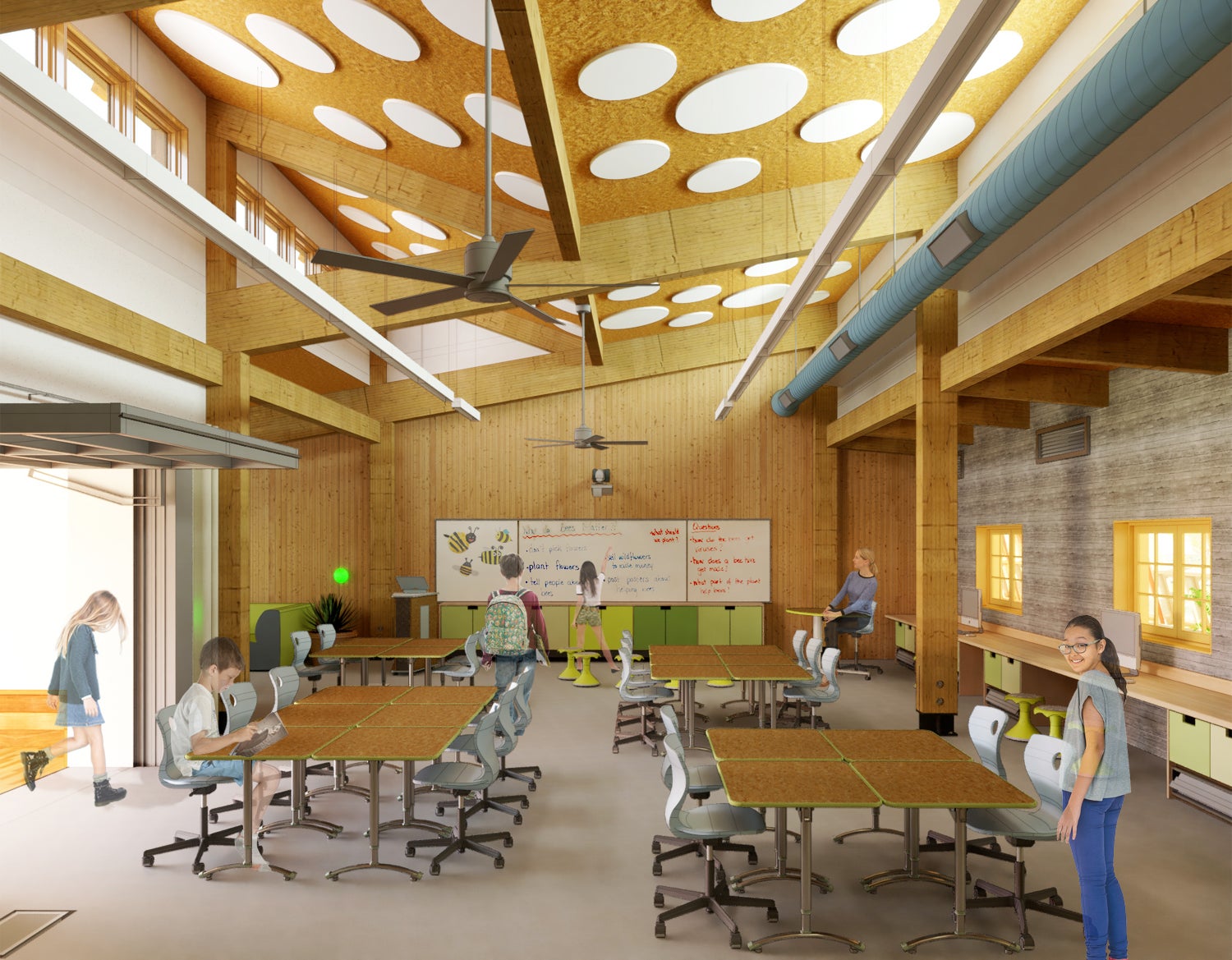
It is generally agreed upon that environmental education has an important place in 21st century schools, as the need to educate the current and future generations of young people on how to live in a sustainable way grows increasingly urgent. Within the framework of formal education in Ontario, efforts to prepare students to be environmentally responsible citizens has mainly concentrated on the integration of sustainability concepts into the curriculum. This thesis argues that equal attention should be given to integrating sustainability concepts into the physical environment of the school – the education facility itself – as it has the potential to be not merely the place where environmental education is taught but be the source of environmental education. This thesis takes the theoretical position proposed by environmental educator David Orr that architecture is a source of pedagogical instruction. The power buildings have to teach people, can be harnessed to design a building that can be utilized to foster sustainability behaviour. Schools’ role in society in preparing children for the future gives an educational building the unique advantage of teaching people to be sustainable-minded when they’re at an impressionable age.
The project presented takes the form of a design proposal for a green school for K-8 students, located on a case study site in Milton, Ontario. A green school is an emerging architectural type, the term for which was developed by the Centre for Green Schools at the U.S. Green Building Council and is used to describe schools that advance sustainability by aspiring to reduce their environmental footprint, improve the wellbeing and performance of its students and staff, and ultimately producing graduates who are ecoliterate. The design proposal concentrates on achieving these three goals through the architecture of the proposed education facility, through a design that demonstrates the environmental awareness it promotes.
Following the long-held tradition of the demonstration project, this thesis builds on strategies developed from a precedent study of existing environmental education centres in the same climatic region. These organizations consider their building an integral part in the fulfillment of their mission to educate the public on sustainability, using it as a demonstration tool. The climatic region of southern Ontario will inform key aspects of the design – the orientation, massing, form and materiality – as true sustainability responds to the specific conditions of the site. The design takes advantage of positioning a school on an ecologically-rich landscape to strengthen students’ sense of connection with nature. The project scope encompasses the spatial design, materiality, structure, building systems and operations, the landscape and site design, and each of these aspects were considered with their potential for pedagogy. The design addresses these aspects of the built environment across different scales, presenting within the school a variety of learning space types whose environmental design has been fine-tuned to suit their function and climate.
The examining committee is as follows:
Supervisor:
Terri Boake, University of Waterloo
Committee Members:
Rick
Andrighetti,
University
of
Waterloo
John
McMinn,
University
of
Waterloo
External Reader:
Paul Dowsett
The
committee
has
been
approved
as
authorized
by
the
Graduate
Studies
Committee.
The
Defence
Examination
will
take
place:
Wednesday,
December 4,
2019
at
2:00pm
in
2026.
A
copy
of
the
thesis
is
available
for
perusal
in
ARC
2106A.